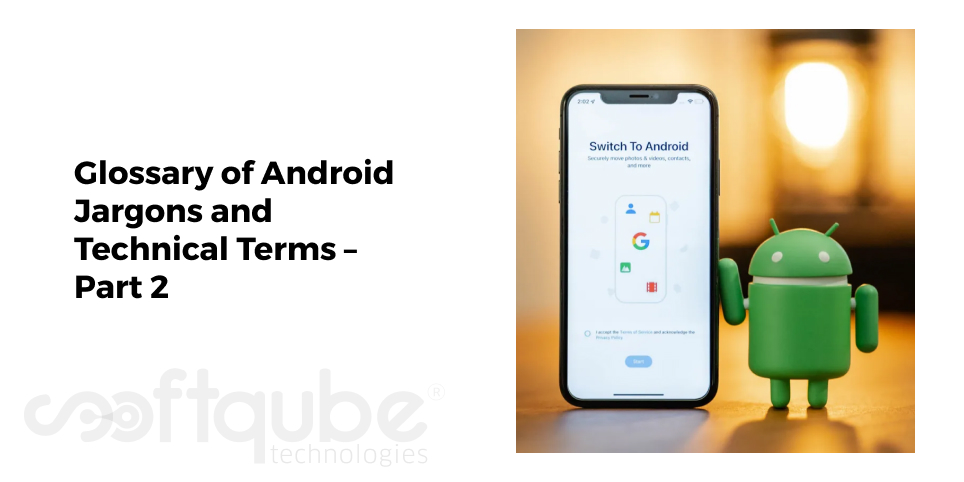Glossary of Android Jargons and Technical Terms – Part 2
December 17, 2015

Welcome back friends; in our previous part we had learnt about some of the well known Android terms and jargons.
Today, in its continuation we will learn some more terms.
So, let’s proceed ahead:

- Fragmentation: Variety is necessary when it comes to developing android apps. Android phones are available in every shape and size. This means there are various android phones available in the market.
Yes, having a variety is a good thing however it can have several issues like as apps that don’t run on all devices or slow uptake of new android releases. This potential is known as Fragmentation.
Is fragmentation a big issue? Different types of hardware and software available in the android market can make the work tedious for developers as they need to develop apps in such a way that they work properly on various devices.
HDR refers to High Dynamic Range which is a photography technique where several photos are taken at different exposures and then these are combined in a single image. This will provide proper exposure and detail to both dark as well as bright areas of the photo.
Some modern phones can easily take HDR photos in just a single snap. Another one is IPS which is known as In Plane Switching. It is a display technology used in LCD screens. IPS displays have a wider viewing angle as compared to that of twisted nematic display.
Twisted Nematic is yet another prevalent LCD technology which reduces the colour shifting issues which indirectly have affected LCDs. These also have a wider colour gamut and hence they can easily generate more colours. Among Android, one of the popular display technology is OLED.
- Material Design: This is the new feature introduced by Google in the new Android version; Android Lollipop. It has the new look and feel for Android with more importance on depth as well as bold graphical elements along with fluid motion so that one can get sense of the place.
The new material design is currently employed by Google for various Android mobile phones. Some of its online tools like Google Maps as well as other redesigned Google+ social network are also equipped with this material design.
It is not just a set of elements from Google but it is a codified interface convention which shows all the aspects as to how an application show look and feel. This contains fonts, colours, animations, shadows, layers, proper placement of these elements and more such as mentioned in the Material design guidelines.
An important idea is that third party App Developers can make Android apps that have a consistent look as well as those that operate with same interface conventions. In this way users don’t get confused with the change in interfaces.
- Milliampre Hour: Its short form is mAh which is a unit to measure electrical charge. It is often used to know the battery capacity and this can be often found in various marketing materials of smart phones & tablets.
The more the mAh rating, the larger its capacity and as the tech specs as well as power management system varies from one device to another, the charging capacity of any battery cannot alone measure the battery life.
Mobile phones with smaller mAh rating on the battery can last longer in case the display and the processor as well as radios are more of energy efficient.
- Nearby: This allows you to connect and share the data with some other devices which are very nearby. As per Google; Nearby uses a small combination of Bluetooth, WiFi to locate several other devices available nearby to that device.
It is basically a set of technologies which developers can incorporate in their apps. Let’s say Google Play Games use Nearby to find others near you who can play a game with.
- NFC: It is a short form of Near Field Communication. It is a technology which helps you to wirelessly transfer information between various devices. Devices like as Bluetooth and Wi-Fi have ranges which can span multiple rooms in your house.
This technology is used in many smart phones and it is widely used to facilitate mobile payment systems like Google Pay and Apple Pay. NFC is used in Android phones to make data transfer easier from one device to another.
Wind Up:
So, here we have discussed few of the terms that will make it easy for you to understand Android. There are many more such terms. Keep reading our blogs; we will be bringing more such terms to you.
For any guidance related to Mobile Apps Development; get in touch with Softqube Technologies.
Share on






